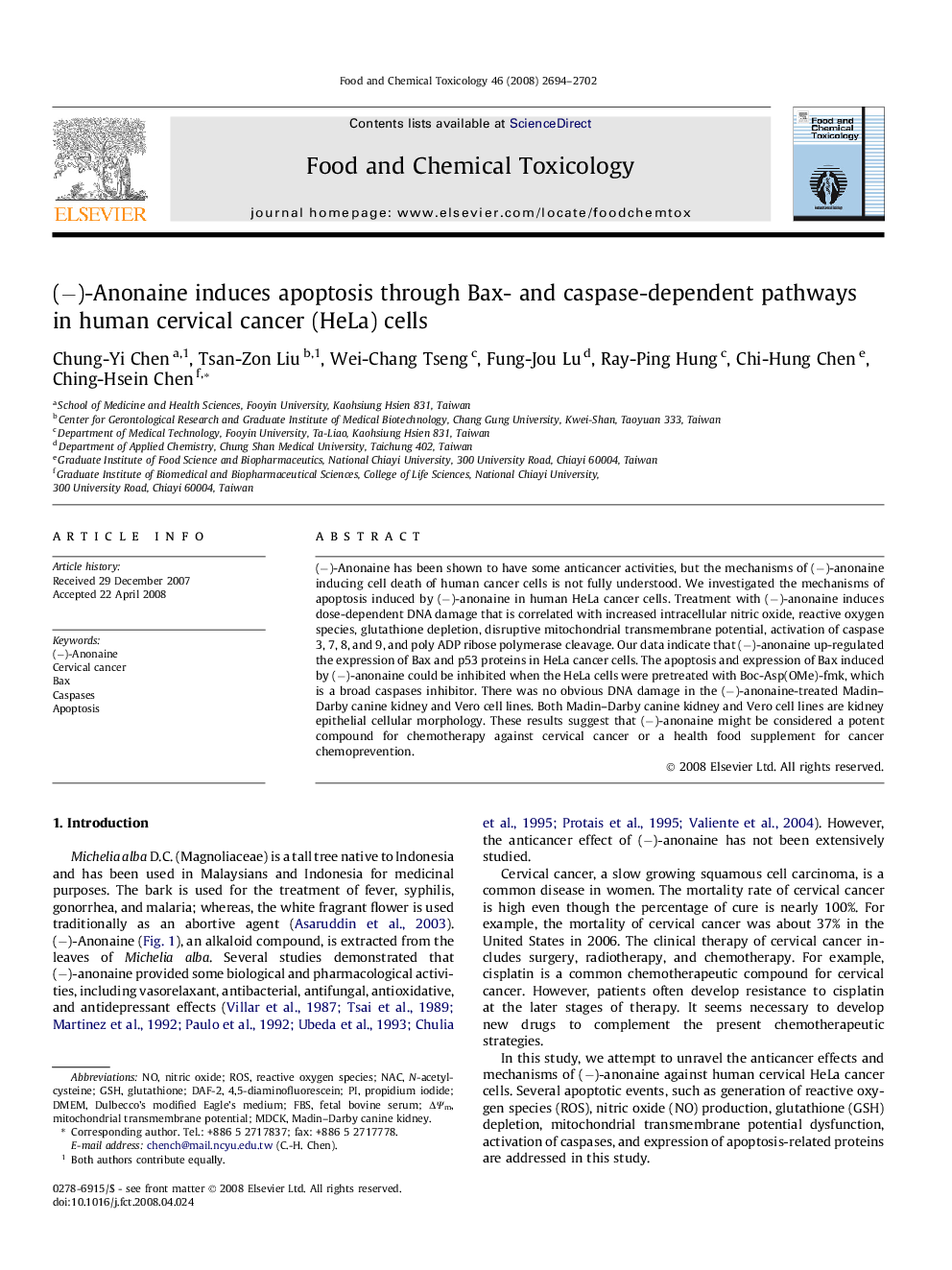| Article ID | Journal | Published Year | Pages | File Type |
|---|---|---|---|---|
| 2587155 | Food and Chemical Toxicology | 2008 | 9 Pages |
(−)-Anonaine has been shown to have some anticancer activities, but the mechanisms of (−)-anonaine inducing cell death of human cancer cells is not fully understood. We investigated the mechanisms of apoptosis induced by (−)-anonaine in human HeLa cancer cells. Treatment with (−)-anonaine induces dose-dependent DNA damage that is correlated with increased intracellular nitric oxide, reactive oxygen species, glutathione depletion, disruptive mitochondrial transmembrane potential, activation of caspase 3, 7, 8, and 9, and poly ADP ribose polymerase cleavage. Our data indicate that (−)-anonaine up-regulated the expression of Bax and p53 proteins in HeLa cancer cells. The apoptosis and expression of Bax induced by (−)-anonaine could be inhibited when the HeLa cells were pretreated with Boc-Asp(OMe)-fmk, which is a broad caspases inhibitor. There was no obvious DNA damage in the (−)-anonaine-treated Madin–Darby canine kidney and Vero cell lines. Both Madin–Darby canine kidney and Vero cell lines are kidney epithelial cellular morphology. These results suggest that (−)-anonaine might be considered a potent compound for chemotherapy against cervical cancer or a health food supplement for cancer chemoprevention.
